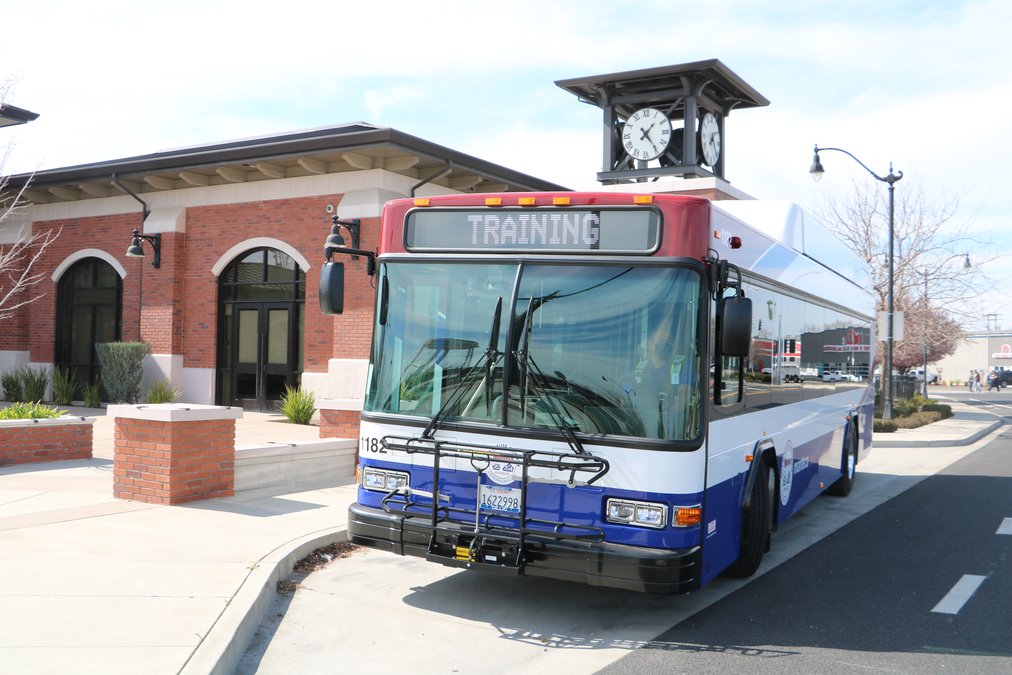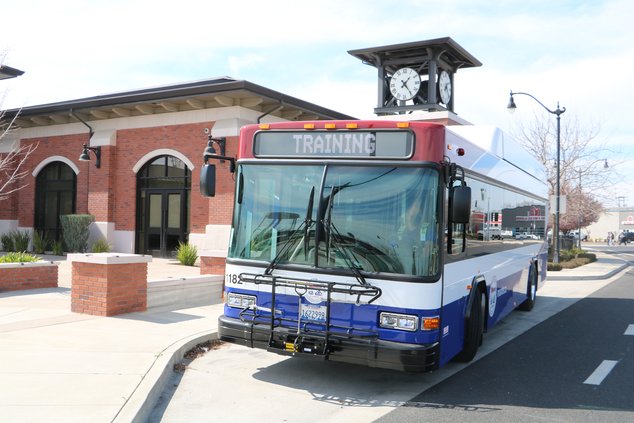Two areas in Manteca that could be tweaked for transit ridership are in the south and southwest area of town.
At Wednesday afternoon’s public workshop, Transit Manager Juan Portillo, using onboard surveys and other forms of data collection on the four fixed bus routes, noted that expanding Route 2 by adding stops south of the 120 Highway Bypass – specifically, the Griffin Park community – and going further west along East Woodward Avenue to Joshua Street, going north to McKinley Avenue, and going to the Great Wolf Lodge on Daniel Street is among the changes under consideration.
The bus routes are currently on one-hour loops, said Portillo.
But the popular Route 1 – the east to west route goes along Yosemite Avenue, from Manteca High to In-Shape gym; Northwoods Avenue / East North Street to Doctors Hospital of Manteca and the Civic Center; down Cottage Avenue back to Yosemite Avenue; going south of Airport Way to Daniels Street; and looping back around – could add another bus while making stops along the way to every 30 minutes.
Portillo said that each bus is equipped with Automatic Passenger Counters, which are sensors used to detect the number of riders entering and exiting the vehicles.
Such data was used in the process of determining ways to improve in-city transit services for the next five years.
Portillo, who has been with the Manteca transit since 2019, said that those areas south of 120 hadn’t been developed when he first arrived.
“Every five years, we have to look into our transit needs (for funding),” he said.
The San Joaquin Council of Government provides the financial support via federal transportation dollars for regional transportation projects and programs.
Ridership on the fixed routes has been up during the past few years.
In 2023, using input from July through June of that year, Manteca had 49,131 during that span.
The following year, ridership jumped to 69,384.
As for this year – from July 2024 to this past December – ridership was already at 40,525.
Dial-A-Ride numbers are also up, going from 7,370 in 2023 to 9,399 in 2024. This year, DAR numbers were already at 5,054 from July through December.
Data also showed that the busy time for transit needs were from 9 a.m. to 3 p.m., accounting for 40 percent of the ridership. The slow time was from 5 p.m. to 8 p.m. where ridership was at 5 percent.
Portillo, in addition, said that more changes along the routes could change once Manteca finally connects with ACE trains with the addition of a loading platform adjacent to the downtown transit center.






